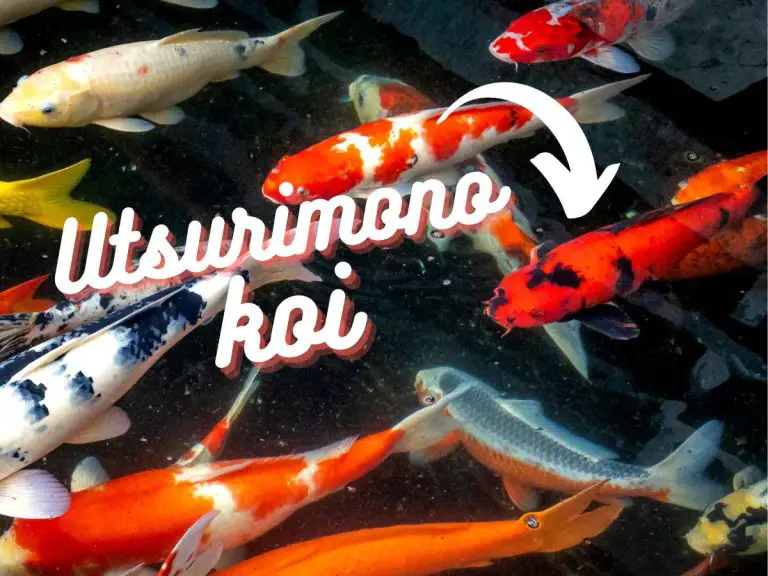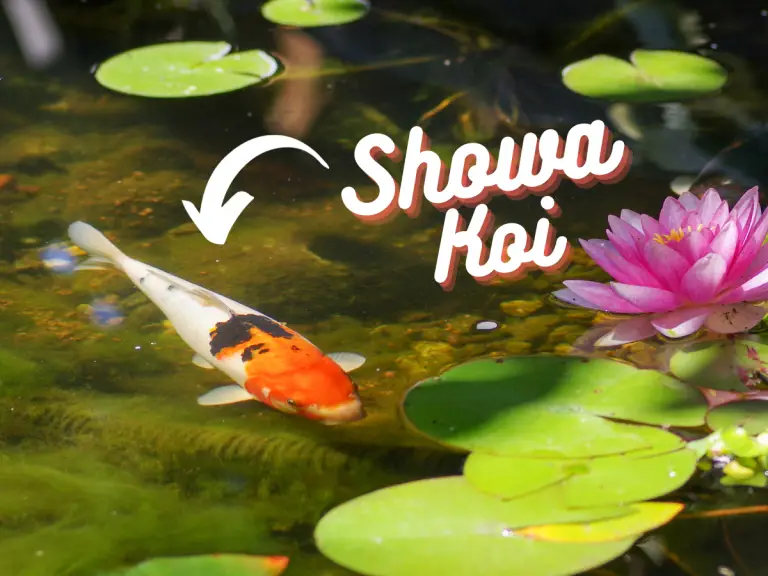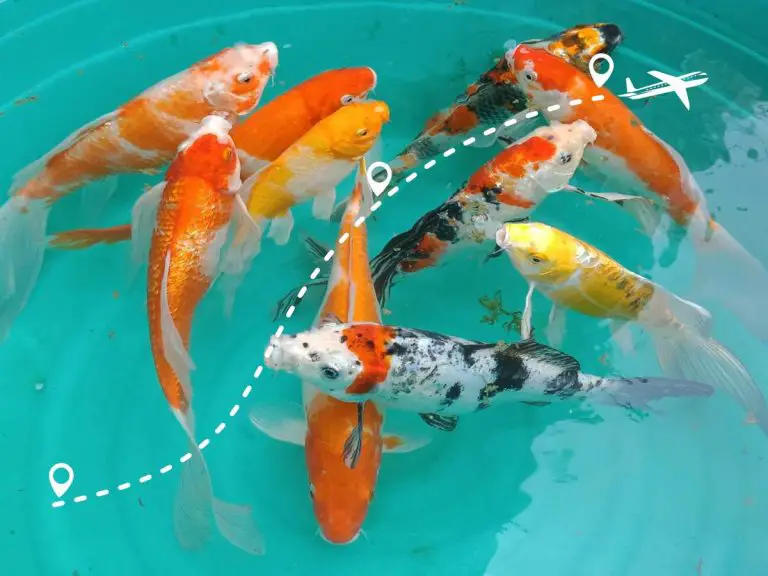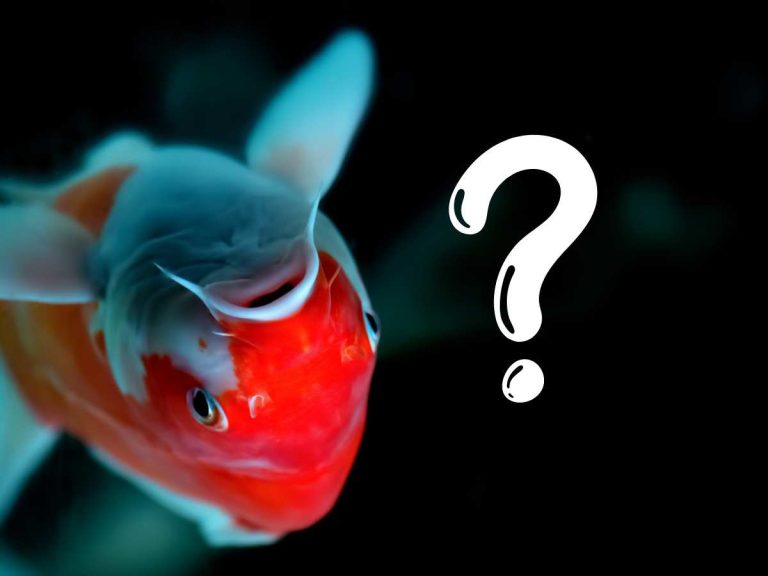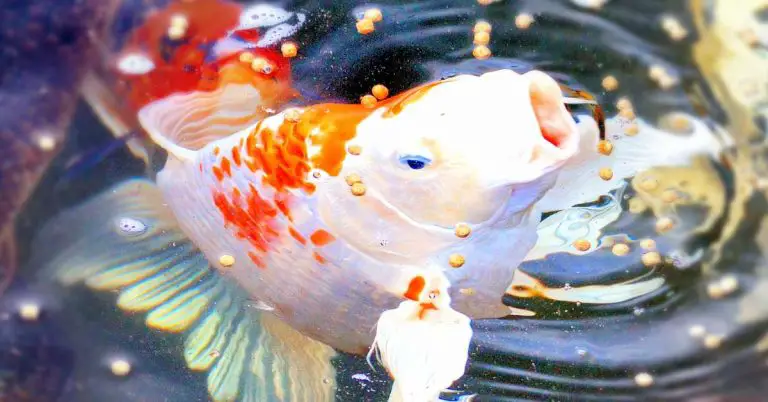Can Koi and Bass Live Together? Yes & No, Here’s Why
Ever found yourself completely entranced by the shimmering dance of koi in a tranquil pond? Or maybe you’ve felt that adrenaline rush watching a bass dart through the water, on the hunt?
So, this begs the question: can these two fish– the koi and the bass – share a space in one pond? Well, it’s a splashy topic, and the answer might surprise you. But first, we need to understand the social nature of both koi and bass.
Koi fish are peaceful, sociable creatures that prefer to live in groups. Koi fish thrive in calm environments with well-maintained water quality. On the other hand, bass fish are characterized by their predatory nature and strong territorial instincts. They tend to live alone or in small groups and require ample swimming space.
Given the differences in behavior and habitat preferences, keeping koi and bass together can pose challenges. Aggression issues may arise, as bass fish may see koi fish as potential prey. Additionally, competition for food and resources can create tensions. Moreover, koi fish prefer calm and clean water, while bass fish thrive in more turbulent conditions.
But, all hope isn’t lost. With careful planning and proper management, successful coexistence between koi and bass is totally possible. Providing ample space and hiding spots, ensuring a balanced diet, and monitoring water conditions regularly can help create a harmonious environment for these two species.
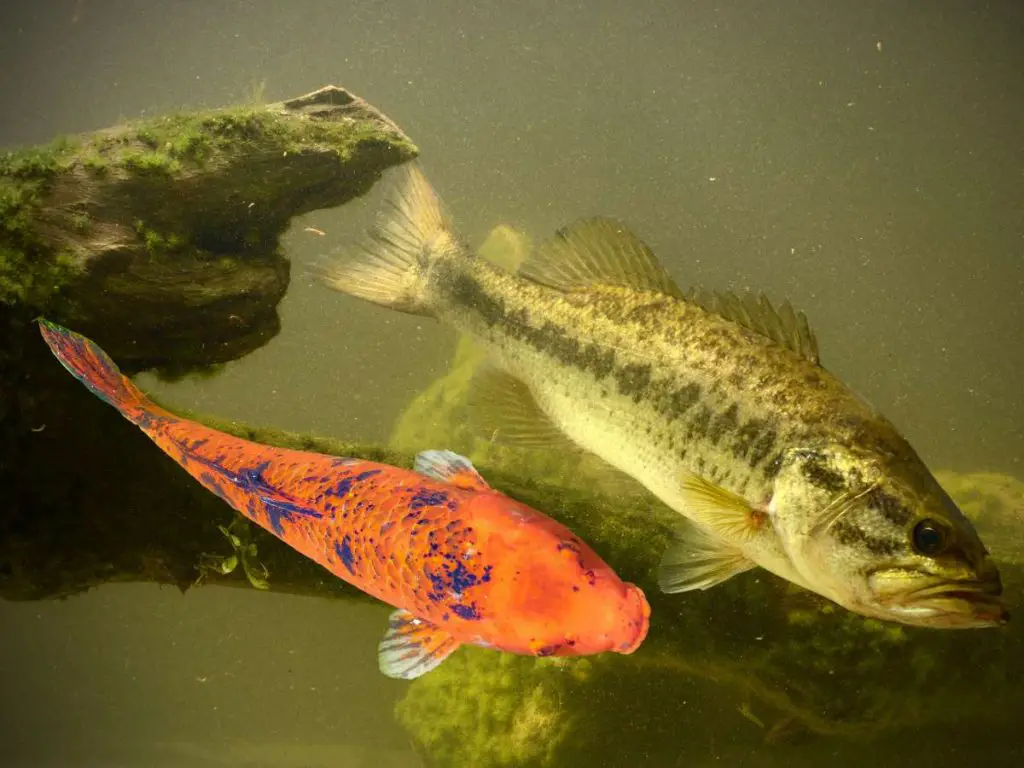
| Aspect | Koi Fish | Bass Fish |
|---|---|---|
| Characteristics | – Vibrant colors (reds, blues, purples) | – Streamlined body, large mouth |
| – Long body, flowing fins | – Sharp teeth | |
| Behavior | – Social, swim in groups | – Aggressive, territorial |
| – Recognize owners, eat from hands | – Solitary or in small groups | |
| Diet | – Omnivorous: plants, insects, crustaceans | – Carnivorous: smaller fish, insects |
| Ideal Habitat | – Calm, well-aerated water | – Freshwater with ample vegetation |
| – Plenty of space, hiding spots | – Prefer 60-75°F (15-24°C) water temperature | |
| Water Conditions | – Stable temperature, clean water | – Can tolerate pH from 6.5 to 8 |
| Compatibility Issues | – Potential aggression from bass | – May view koi as competition or prey |
When it comes to koi fish, there’s so much more than meets the eye. These beautiful creatures have captivated people’s hearts for centuries with their vibrant colors and graceful movement. But what really makes koi fish unique?
Well, let’s start with their characteristics. Koi fish are a type of carp, and they come in a variety of colors and patterns. From bright reds and oranges to soothing blues and purples, their colors can truly mesmerize you. They also have a distinct, long body shape, with flowing fins that add to their elegance.
But it’s not just their appearance that sets koi fish apart. Koi are known for their social behavior, often gathering in groups and swimming together in a synchronized manner. It’s like watching a ballet performance in your own pond! These fish are also quite intelligent and can learn to recognize their owners, even eating from their hands.
Now, let’s talk about the ideal habitat conditions for koi fish. Koi thrive in ponds with plenty of space to swim and explore. They prefer calm, well-aerated water that is clean and free from toxins. It’s important to maintain a stable temperature for their environment, as sudden changes can stress them out. Additionally, koi fish love to have hiding spots, such as aquatic plants or caves, where they can take a break from the world and feel safe.
Characteristics and behavior of bass fish
Bass fish belong to the sunfish family and are known for their aggressive nature. They have a streamlined body with a large mouth and sharp teeth that help them catch and devour their prey efficiently. Bass fish are typically found in freshwater bodies such as lakes, rivers, and ponds. They are known for their predatory behavior and have a reputation for being skilled hunters.
The behavior of bass fish is influenced by their instinct to find food and defend their territory. They are highly territorial and will vigorously protect their spawning ground from intruders. Bass fish are also known to exhibit aggressive behavior towards other fish that enter their territory, especially during the breeding season. They are highly adaptable and can live in a wide range of water conditions, from clear to murky waters.
Due to their territorial nature, bass fish are mainly solitary creatures. They prefer to live alone or in small groups of their own species, forming loose aggregations. They do not exhibit social behavior as strongly as other fish species, such as schooling behavior seen in species like minnows or sardines.
When it comes to interacting with other fish, bass fish can be aggressive and territorial. They will chase and attack intruders to protect their territory or during the breeding season. This aggressive temperament makes them less compatible with certain fish species that may be targeted as potential prey or viewed as competition for resources.
Ideal habitat conditions for bass fish
Bass fish have specific habitat requirements for their optimal growth and survival. They thrive in freshwater environments with ample vegetation, as it provides them with shelter and hunting grounds. Bass fish prefer a water temperature range of 60-75°F (15-24°C) and require good oxygen levels to survive.
Additionally, bass fish are sensitive to water quality and require clean and well-aerated water. They can tolerate a wide range of pH levels, usually ranging from 6.5 to 8. However, it is essential to maintain stable water parameters, as sudden fluctuations can stress and even harm the fish.
Compatibility of koi and bass fish
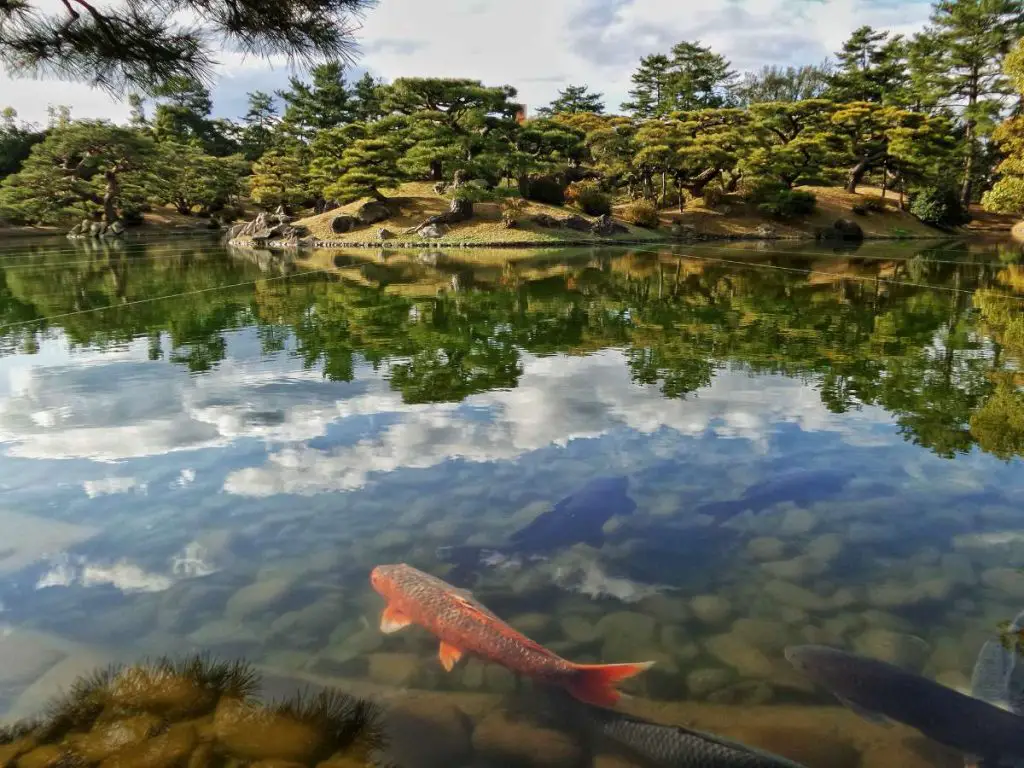
Assessing behavioral compatibility
Before you consider housing koi and bass fish together, it’s important to assess their behavioral compatibility. Koi fish are generally peaceful and sociable, often seen swimming in schools and interacting with other fish. On the other hand, bass fish are known to be more aggressive and territorial, especially during the breeding season. They may exhibit aggressive behavior towards other fish, making them potentially incompatible with the peaceful nature of koi fish. So, it’s crucial to consider whether their behaviors can coexist harmoniously in the same pond or tank.
Assessing dietary compatibility
Another aspect to consider when determining the compatibility of koi and bass fish is their dietary needs. Koi fish are omnivorous, meaning they eat both plants and small aquatic creatures like insects and crustaceans. They have a varied diet and require a nutritional balance to thrive. On the other hand, bass fish are carnivorous and primarily feed on smaller fish. They have a different dietary requirement than koi fish, which may pose challenges in providing suitable food for both species. It’s essential to ensure each fish’s nutritional needs are met without jeopardizing the other’s wellbeing.
Assessing environmental compatibility
The last factor to consider in determining the compatibility of koi and bass fish is their environmental needs. Koi fish prefer still or slow-moving water and thrive in ponds with plenty of vegetation and hiding spots. They also require stable water conditions with proper filtration and aeration. Bass fish, on the other hand, are more adaptable to different water conditions but may require faster-moving water and open spaces in their habitat. It’s crucial to ensure that the environmental conditions of the pond or tank meet the needs of both species, providing them with a suitable and comfortable living environment.
Challenges of housing koi and bass together
| Consideration | Koi Fish | Bass Fish |
|---|---|---|
| Temperament | – Generally peaceful | – Aggressive, especially during breeding season |
| Dietary Needs | – Omnivorous: enjoys a mix of plants and protein | – Carnivorous: prefers smaller fish |
| Environmental Needs | – Prefers calm, clean water | – Adaptable but may prefer faster-moving water |
| Social Behavior | – Enjoys company, often seen in groups | – More solitary, can be territorial |
| Potential Issues | – Might face aggression from bass | – Might view koi as competition or prey |
| Tips for Coexistence | – Provide ample hiding spots | – Monitor closely for signs of aggression |
| – Ensure balanced diet for both | – Regularly check water conditions |
When it comes to housing koi and bass together, there are a few challenges that need to be considered. While it is possible for these two species to coexist, there are some potential issues that may arise.
Potential aggression issues
One of the main challenges of keeping koi and bass together is the potential for aggression. Bass are known to be more aggressive than koi, and their territorial instincts can cause conflicts in a shared habitat. Bass may try to dominate the space and attack the koi, leading to injuries or even death. It is important to carefully monitor the behavior of both species and be prepared to separate them if necessary.
Competition for food and resources
Another challenge is the competition for food and resources. Koi and bass have different dietary needs, and their feeding habits can vary. While koi are omnivorous and primarily feed on plants and insects, bass are carnivorous and prefer to eat smaller fish. This can create a situation where both species are competing for the same food source, leading to a lack of nutrition for one or both species. It is crucial to carefully consider the feeding requirements of both koi and bass and ensure that they are receiving a balanced diet.
Differences in preferred water conditions
Additionally, koi and bass have different preferences when it comes to water conditions. Koi thrive in calm, clean water with adequate filtration and aeration. On the other hand, bass prefer slightly warmer water temperatures and may require different conditions for optimal growth and health. Maintaining suitable water conditions for both species can be a challenge, as their needs may not align perfectly. Regular monitoring of water parameters, such as temperature, pH, and oxygen levels, is crucial to ensure a healthy environment for both koi and bass.
Tips for successfully keeping koi and bass together
Providing ample space and hiding spots
When it comes to housing koi and bass together, one of the key factors for success is providing them with ample space and hiding spots. Both species benefit from having plenty of room to swim and explore, so make sure your pond or aquarium is large enough to accommodate their needs. This will help reduce aggression and stress that can arise from overcrowding.
In addition to space, it’s important to include plenty of hiding spots for both koi and bass. This can be achieved through the use of rocks, caves, or aquatic plants. Hiding spots provide a sense of security and allow the fish to retreat if they feel threatened. They also serve as natural barriers, helping to prevent any potential territorial disputes between the koi and bass.
Balancing the diet for both species
Another crucial aspect of keeping koi and bass together is ensuring they receive a balanced diet. Koi are omnivorous and require a varied diet consisting of both plant material and protein-rich foods. On the other hand, bass are primarily carnivorous and rely on a diet rich in small fish and insects.
To meet the dietary needs of both species, consider incorporating a mix of commercial fish foods, live or frozen prey items, and fresh vegetables. This will provide the necessary nutrients for optimal health and growth. Be mindful of each fish’s individual feeding habits, and adjust the amount and frequency of their meals accordingly.
Monitoring water conditions regularly
To maintain a harmonious habitat for both koi and bass, it’s essential to monitor water conditions regularly. Both species have specific water parameter requirements, and deviations from these ideal conditions can lead to stress and health issues.
Make sure to test the water regularly for factors such as temperature, pH, ammonia, nitrite, and nitrate levels. Maintain proper filtration and aeration systems to ensure optimal water quality. Additionally, be mindful of any chemical treatments or medications you use in the pond or aquarium, as they can have varying effects on both koi and bass.
Related Post: Why you Koi isn’t swimming around like nomal
Examples of successful coexistence of koi and bass (real-life examples)
Let’s take a look at some real-life examples of people who have successfully housed both koi and bass together. These stories will give you a glimpse into the possibilities of creating a harmonious habitat for these two fish species.
Case Study 1: John’s Backyard Oasis
John, a pond enthusiast from Texas, has been able to maintain a thriving ecosystem with both koi and bass in his backyard pond. He carefully selected a mix of koi and bass that were similar in size and temperament, which minimized any potential aggression issues. Additionally, John created plenty of hiding spots and planted aquatic plants to provide areas for both species to retreat or establish territories.
Case Study 2: Sarah’s Lake Retreat
Sarah, an avid angler and koi lover from Michigan, decided to combine her passions by creating a large lake on her property that housed both koi and bass. She carefully monitored the water conditions and ensured that they were within an acceptable range for both fish species. Sarah also implemented a feeding schedule that catered to both the dietary needs of the koi and the bass, providing a balanced diet for all.
Sharing experiences and advice from experienced hobbyists
It’s not just the experts who have successfully kept koi and bass together – hobbyists and enthusiasts have also shared their experiences and advice. Online forums and social media groups dedicated to pond and fishkeeping are filled with stories and tips from those who have achieved harmony between koi and bass.
Some common advice from experienced hobbyists includes:
- Start with small and similarly sized fish to avoid potential aggression problems.
- Create a diverse environment with plenty of hiding spots and plants.
- Monitor water conditions regularly and make necessary adjustments.
- Provide a balanced diet that meets the nutritional needs of both koi and bass.
- Observe the behavior of the fish closely and make modifications as needed.
By listening to these shared experiences and taking their advice into consideration, you can increase your chances of successfully keeping koi and bass together in your pond.
Final Thoughts
So, can koi and bass live together? After examining the characteristics, behavior, and habitat preferences of both species, as well as assessing their compatibility in terms of behavior, diet, and environment, the answer is not a simple yes or no.
While it is possible for koi and bass to coexist harmoniously under the right conditions, there are several challenges that need to be considered. Potential aggression issues, competition for food and resources, and differences in preferred water conditions can all pose difficulties when housing these fish together.
However, with proper care and attention, it is indeed possible to successfully keep koi and bass together. Providing ample space and hiding spots, balancing the diet for both species, and monitoring water conditions regularly are essential factors for achieving a harmonious habitat.
Real-life examples of people keeping koi and bass together suggest that it is possible, but it requires careful management and attention to detail. By sharing experiences and advice from experienced hobbyists, we can learn valuable insights into maintaining a successful coexistence.
In summary, while there are challenges to housing koi and bass together, it is possible to create a harmonious environment for both species. By following the tips provided and learning from the experiences of others in the hobby, enthusiasts can enjoy the beauty and grace of koi fish alongside the excitement of bass fish in their ponds.
Main Facts Covered in the Article:
- Koi and bass fish can potentially live together
- Koi fish have specific characteristics and behavior
- Bass fish have their own characteristics and behavior
- Compatibility between koi and bass can be assessed in terms of behavior, diet, and environment
- Challenges of housing koi and bass together include aggression, competition, and water conditions
- Tips for successfully keeping koi and bass together include providing space, balancing diet, and monitoring water conditions
- Real-life examples and advice from experienced hobbyists demonstrate successful coexistence
Related Questions
Can koi fish and bass fish be housed together in a pond?
While it is possible to house koi and bass together in a pond, it comes with challenges. Koi fish prefer calm, still water with ample space and hiding spots, while bass fish thrive in more active water with vegetation. It is important to carefully monitor their compatibility, provide adequate space, and balance their diets to ensure a harmonious coexistence.
What are some signs of aggression between koi and bass fish?
Signs of aggression between koi and bass fish may include chasing, fin nipping, or attacking each other. Aggressive behavior can lead to stress, injuries, and even death in either species. It is crucial to monitor their behavior closely and provide enough space and hiding spots to minimize aggression. Separation may be necessary if aggression becomes a persistent issue.

